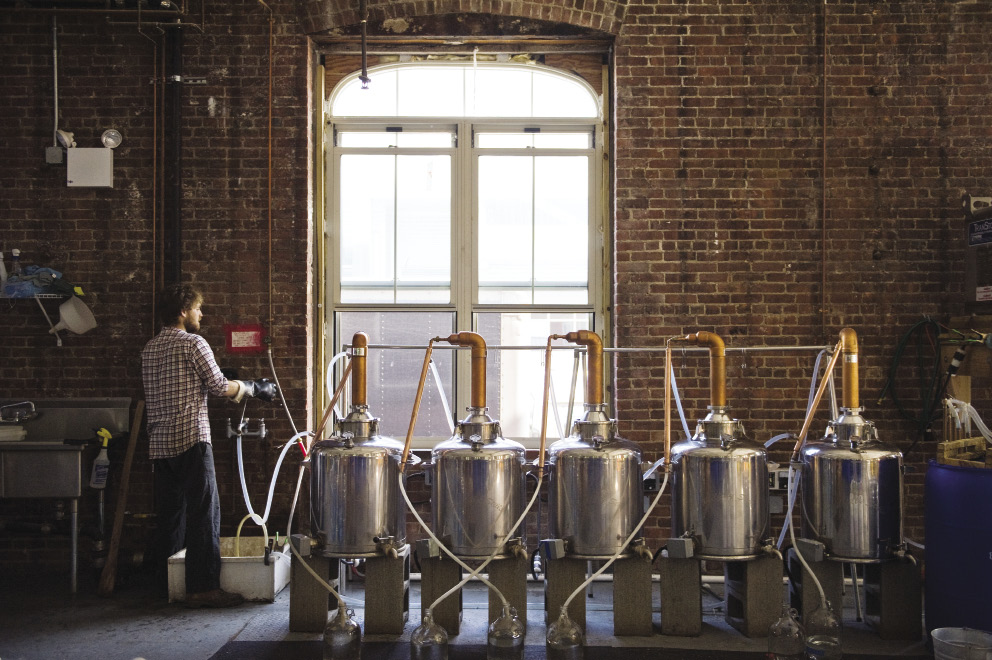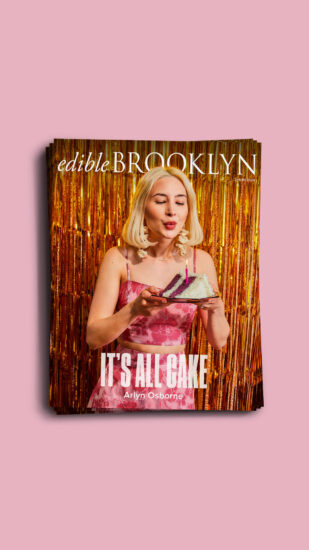It’s hard to find a drink in eastern Kentucky. When I was in high school, there were rumors of a Coke machine in the clubhouse at the nine-hole country club that spit out cans of free beer. There were stories you could get alcohol at the VFW, but nobody ever seemed to go there. Harlan County was dry, which meant that selling any intoxicating beverages was forbidden by laws as old as Prohibition. For most people, bootleggers proved to be the most convenient solution. They were closer than the drive to the nearest “wet” town, half an hour away, or to Virginia, which, while closer on the map, was over two mountains.
Also, bootleggers didn’t card.

Our bootlegger lived on Pine Mountain, in a gray trailer that sat in a gravel lot by the side of the road that could have been mistaken for a widening of the shoulder. The yard, or what there was of it, offered views out over the Cumberland River Valley. I wasn’t old enough to drive, but my friend Derek was, and he had the connection.
You turned off the main road into the little parking area between the house and a corrugated metal shed. You turned the headlights off (business here was done after dark). A man emerged from the rear of the house with a flashlight, which he kept aimed at the ground or into his palm. He sold Zima, Mad Dog and Seagram’s 7, and maybe other things, but I was a sophomore in high school in the mid-1990s, and my worldview was limited. You told him what you were looking for, he would disappear behind the shed, sometimes for quite a while, and finally return with a brown paper bag. “Y’all be good,” he’d say and then disappear. Then we would turn the headlights back on and back out of the driveway.
We didn’t drink very often, but when we did, we’d head up into the hills with chasers, jerky and dip tobacco, park the cars around a patch of dirt, and light a bonfire out on the artificial prairie of an abandoned strip mine. We called this “camping.” There were no bands, no cocktails, no cover charge, and it was all ages, pretty much all the time. You could see for miles across the tops of the mountains. No one lived anywhere nearby. It was about as far from any sort of culture as we could get.
Eastern Kentucky then was becoming less isolated, thanks to VCRs and cable television, but even to this day it’s still the type of place where you’re lucky after pushing “seek” on the radio to catch a station. Geographically, the town of Harlan is cut off by mountains that make it a day’s drive to a shopping mall of any size. Each time a friend got his driver’s license, a new world opened up, circumscribed by the Dairy Queen parking lot, an abandoned water plant covered with kudzu, the loading dock of an old coal tipple, and the strings of mostly empty roads in the valleys that connected them.

Most of my friends were patrons of the Pine Mountain bootlegger, but Smitty, the guitar player in my high school band Nicotine Jimmy Dog, preferred Mag’s, a more mainstream option located conveniently in town. Mag Bailey sold liquor out of her house for nearly 80 years, just a few hundred feet from the elementary school. She was rumored to have escaped various prosecutions by paying federal excise tax on her sales, thus protecting herself from the most severe criminal penalties should things have gone south. It was also said that she bought off the local officials with well-placed bribes and long-term investments — she reportedly paid the law school expenses for some of the town’s attorneys. I’m not sure that all of this is true, or that it explains everything, but everybody knew Mag and what she was up to, and she’d been operating with impunity for decades.
Mag lived on a street named after her. She had a paved blacktop circle behind an outbuilding next to the house — a kind of drive-through window — and kept an elderly man in her employ to run the shop. Mag’s was open during the daylight hours, and I remember driving there as a 15-year-old on a bright fall afternoon with Smitty and picking up a pint of Southern Comfort before going to band practice. Mag’s sold moonshine, too, but when you’re not old enough to drive, you sort of want to start with something manageable.
Five years after Mag died, the municipality of Harlan voted to go provisionally wet as part of a political compromise between the abstinence and pro-booze factions. The era of the bootlegger is dying. Most states now allow liquor sales on Sunday. Washington recently privatized state-run liquor stores. Many states allow liquor sales in grocery stores. And just as it is becoming easier to buy and drink alcohol, prohibitive restrictions on making it are easing, which has prompted a gold rush of new distilleries.
“Craft distillery” has become the industry term for an independently owned, small distillery making no more than 100,000 gallons of spirit a year, though many produce far less (and some are no longer independently owned). According to Michael Kinstlick, who studied the boom in craft distilling for the American Distilling Institute, there were only six operating craft distilleries in the United States in 1990. By 2000, there were about 25. By 2012, more than 250 were operating in all but five states. That number is expected to climb to 1,000 in the next decade.

The Appalachian moonshiner, once working only by the light of the moon, now has his own reality television show. Another television show, set in a fictionalized Harlan County, had a plotline featuring a colorful bootlegger named Mags. And while I expect there are now far fewer Appalachian moonshine operations run for profit than there were a decade ago, there are hundreds of home distilleries popping up in cities, suburbs and rural areas, a new generation of moonshiners making whiskey not out of economic necessity or alcoholic scarcity, but out of affinity for the drink, or just curiosity. The same year that Mag died, I was back in Kentucky and got my hands on a gallon of moonshine from a bootlegger. I brought it back to Brooklyn and shared it with friends at parties. It was popular. As my supply started to run out, I said to David at his birthday party what I had been thinking for some time: Why don’t we try to make it ourselves?
Surely it couldn’t be that hard. And it isn’t terrifically hard to make some sort of distilled alcohol. After about a year of the two of us bootlegging and, yes, selling bottles on the sly, I started to get calls from people I didn’t know who wanted to blog about the moonshine. Our sphere of influence had gotten larger than was comfortable. That’s when David suggested we look into getting a license, only just then realizing what a fortuitous time it was for distilling, as newly relaxed laws made it easier than ever to start a commercial distillery in New York. Our plan was to keep doing what we were doing, at barely more than a hobbyist’s scale, and thus make legal moonshine for friends and neighbors.
In April 2010, the first drops of whiskey legally distilled in New York City in nearly 90 years began to flow from an 8-gallon stainless-steel still in a 320-square-foot room in Brooklyn, otherwise known as Kings County Distillery, then the smallest distillery in the country. We quickly outgrew that space and relocated to a larger home at the former Paymaster Building of the Brooklyn Navy Yard. And as we’ve expanded, we’ve watched New York City’s distilling community grow with us. Since we received our license, 10 additional distilleries have opened in the borough of Brooklyn and two in the Bronx, all of us helping to return New York City to a place of prominence in the distilling world, a position it had held throughout the first three centuries of its existence.
It’s a good time to be a glass of whiskey in America.
Condensed and reprinted with permission from The Kings County Distillery Guide to Urban Moonshining by Colin Spoelman and David Haskell (Abrams Books, October 2013, $29.95).
Want to see more beautiful photos that didn’t make the cut for print? We’ve got ’em here. We’ve also got their interview with Heritage Radio Network for your listening pleasure.










